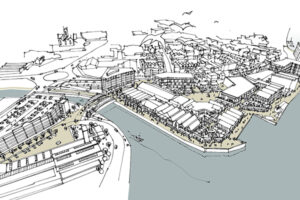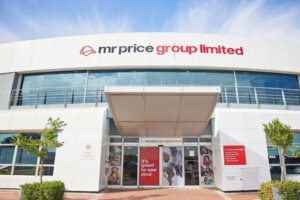By Johannes Quandt
The following text has been written with brutal honesty to ensure that it cannot be misunderstood by managers running a business. However, you have to be willing to read this with an open mind and to be honest with yourself. Otherwise, you should not waste your time reading it.
Let me begin by asking you a few questions that you should try to answer for yourself. First: Does your company have a clear three- to five-year plan? Second: Has it been successfully communicated and implemented throughout the organization? Third: Is the company culture positive and influential?
Background
The majority of companies struggle with the aforementioned issues, which are the fundamentals of running a business properly. Companies did not feel the need to make major changes until they found themselves in financial trouble. Then, investments were reduced, unprofitable businesses were closed, salaries were frozen, and outside consultants were hired to come up with various plans. They analyzed strengths and weaknesses and drew up action plans on how to focus and “reposition the brand”. Investors and owners were persuaded to free up money for additional investment in order to build attractive online stores and retail outlets, with the goal of enabling consumers to experience the brand. Major investments flowed into architecture and visual merchandising. Digital investments in infrastructure were secondary considerations and were included in the rollout plan late in the process.
The Truth of the Matter
Most of the problems companies face are of their own making – and they could have been avoided. It all comes down to poor management.
The outbreak of Covid-19 has shocked the entire industry. Renowned psychiatrist Elisabeth Kuebler-Ross (1926 – 2004) showed the following stages of change in her 1969 curve.
Major brands understood, early on, how they needed to respond and that their plans had to be re-prioritized. Inditex, for example, announced in June 2020 that they would invest €1 billion in online business, while investing another €1.7 billion in modernizing integrated store platforms (technology solutions). They reacted quickly and adjusted their plan while other companies were still in a state of shock.
Retail’s Role in the Future
Retail should not be viewed as a single sales channel that only generates sales. It is the touchpoint through which consumers can experience a brand.
Online and retail must be understood as one. E-commerce serves as an extension of retail in the digital world as a means of engaging with consumers in a more accessible way. Another avenue is social media, which is designed to interact with consumers on a more personal level while being promoted in a personal, “user-to-user” manner. Companies need to realize that social media and e-commerce do not detract from retail. Nothing is being taken away. Once they are harmonized, both sides benefit from each other. The secret is that such harmonization requires clear and organized orchestration, which is entirely up to the brand itself. Things are more complex than ever before. In the past, having the right stock, at the right time, at the right price, and in the right quantity was critical. Those things are still relevant today, but only foundationally speaking. Now it is a matter of knowing who the consumers are, where and how to meet or attract them, and how to retain them.
Therefore, correct consumer data is helpful and assists in making the approach as personalized as possible, which is relevant both online and in physical stores. Brands need to be authentic if they want to achieve maximum success. The extent to which they are willing to open up and show the “true inner workings” of a brand will determine how excited consumers will be – if they like what they see. Brands should avoid jumping on trends and trying to do things that they do not fully believe in. Commitments should never be made if you are unable to rise to the occasion.
Sustainability is a huge issue now and every brand is talking about sustainable materials and processes. Consumers have to be able to trust that what they have been promised will actually be delivered. Therefore, you have to ensure that things are not just used for promotional purposes, but that they are part of the real DNA of the brand. Otherwise, consumers may be disappointed, and you might end up achieving the opposite effect.
The key function of retail is to be the physical touchpoint that builds trust with the consumer. Employees are no longer sales machines. They are ambassadors and advisors, and they function as socializers and friends of consumers. As a result, how one’s employees are treated will be reflected in their behavior as representatives of the brand. Finding the cheapest salespeople is no longer the goal. Instead, it is all about having fewer, more suitable salespeople working in the store. Well trained, educated, and motivated employees are needed to tell consumers the true story behind a brand. In the future, consumers will have an even closer contact with them, which is a new way of creating loyal consumers. A sense of community is what consumers relate to, which is what Nike, for example, has offered for years via its running clubs.
Shopping Centers and the High Street
Across Europe, there are thousands of shopping centers that have been struggling for years. Why? They do not offer enough connected experiences. Food courts increase customer dwell time, but that simply is not enough. This is another area in need of a clear strategy, one in which leasing managers do not function as mall developers.
In the future, malls will function as huge department stores that feature shop-in-shop characteristics and offer a real consumer journey. Consumers will experience such multi-label environments as journeys through different “little worlds” that are synchronized with each other. In this regard, success will depend, to a great extent, on the vision of a shopping center. This will drive footfall as consumers will be able to choose which parts of a mall they want to use. It will even be possible to have mass market and luxury items under one roof. Due to the fact that there is a great deal of potential to be found, thought processes should be even more extensive. Thus, there is a future for Unibail-Rodamco-Westfield, ECE, etc., but not the one they have in mind today.
High street locations will be dependent on strong city developments, in which city managers work towards balancing the mix of experiences in order to attract specific groups of people. That will ensure that cities still have unique selling points and are not forced to compete with surrounding cities as much as they are today. External factors have always had an impact on business, and they always will. Sometimes they are positive, and sometimes they are negative. However, the future depends entirely on a flexible plan, strong execution, and smart/agile management.
Success will be achieved if, first, the fundamentals of the business are up and running; second, the industry is observant and adaptable in terms of development and opportunities; and third, management leads and manages the brand, while maintaining a strong, positive corporate culture.
Once the vision has been established, a brand will be able to thoroughly build its credibility and ensure that it remains authentic with respect to consumers. After all, they will be the ones leading the charge for change, as is the case in the retail industry today. Given the times in which currently live, the only real risk is standing still. Therefore, you had better wake up.






